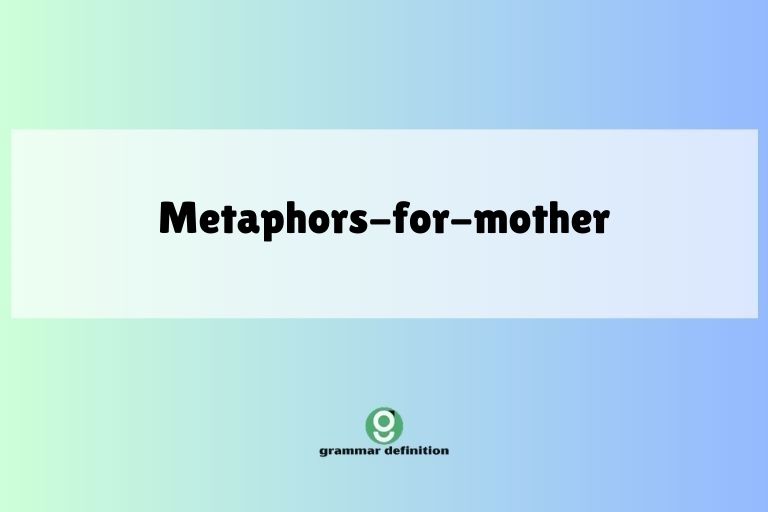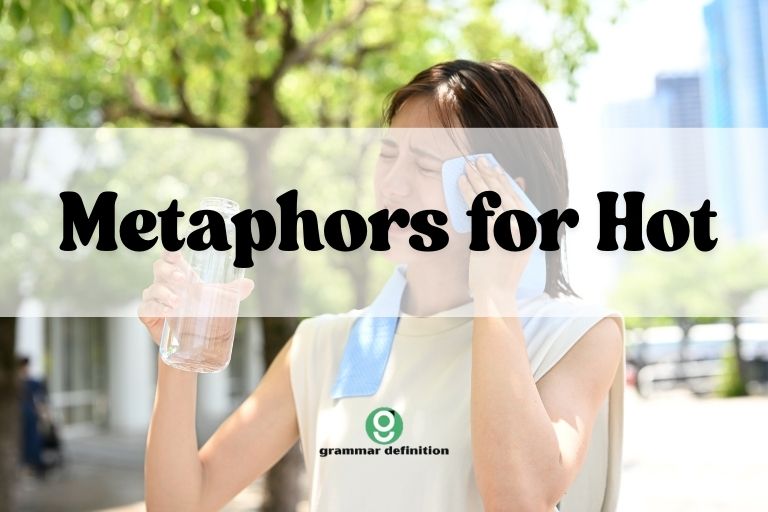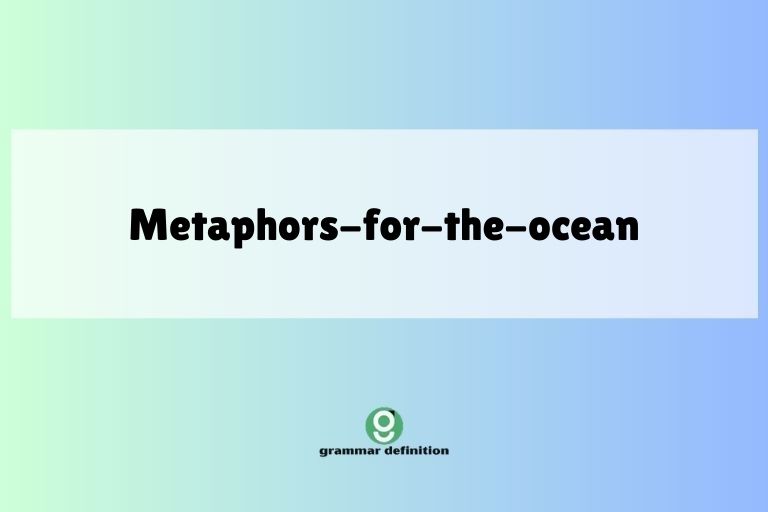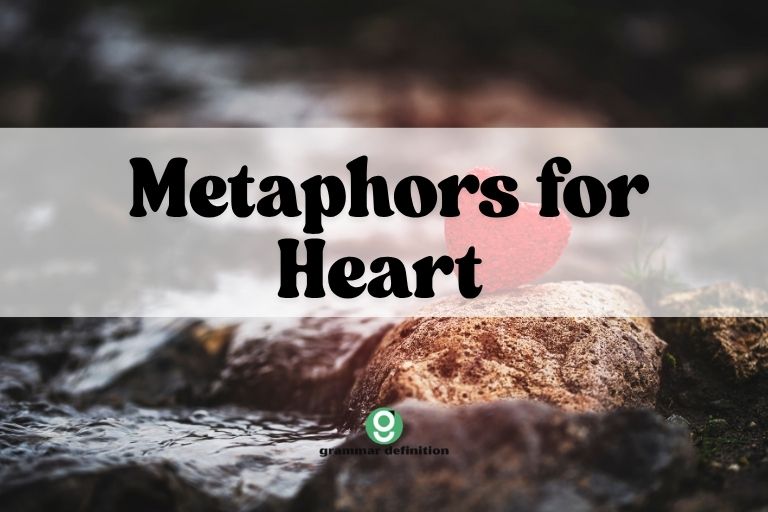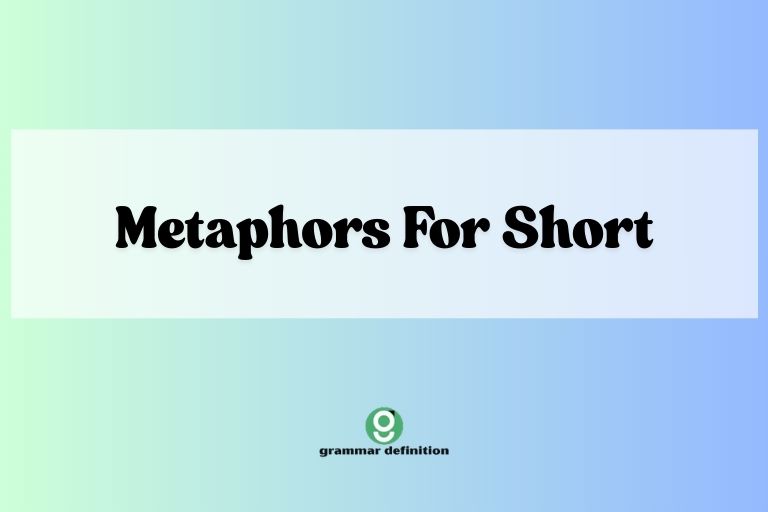Metaphors for Water: A Comprehensive Guide
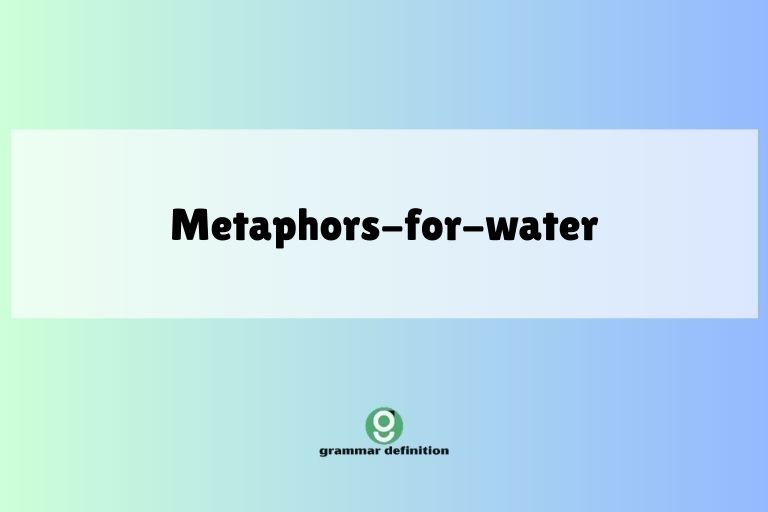
Metaphors are powerful tools in the English language, allowing us to understand abstract concepts by relating them to something more concrete. Water, a fundamental element of life, is frequently used as a metaphor due to its versatile nature and universal presence.
Understanding these water-based metaphors enriches our comprehension of literature, everyday conversations, and even technical writing. This article provides a comprehensive guide to metaphors for water, exploring their meanings, usage, and impact on communication.
This guide will benefit students, writers, and anyone looking to enhance their understanding of figurative language.
This guide will benefit students, writers, and anyone looking to enhance their understanding of figurative language. Whether you’re analyzing poetry or simply trying to spice up your writing, mastering water metaphors will prove invaluable.
Table of Contents
- Introduction
- Definition of Metaphor and Water Metaphors
- Structural Breakdown of Water Metaphors
- Types of Water Metaphors
- Examples of Water Metaphors
- Usage Rules for Water Metaphors
- Common Mistakes with Water Metaphors
- Practice Exercises
- Advanced Topics in Water Metaphors
- Frequently Asked Questions
- Conclusion
Definition of Metaphor and Water Metaphors
A metaphor is a figure of speech that directly compares two unrelated things, stating that one thing *is* another to suggest a similarity or shared quality. Unlike similes, which use “like” or “as” to make comparisons, metaphors imply a direct equivalence. This creates a vivid image or enhances understanding by transferring qualities from one concept to another. For example, saying “He is a lion in battle” means he possesses the bravery and strength associated with a lion, without literally being one.
Water metaphors are metaphors that specifically use water or aspects of water (such as rivers, oceans, rain, or ice) to represent other concepts. Because water is essential for life and exhibits diverse characteristics (calmness, power, fluidity, depth), it serves as a rich source for symbolic expression. These metaphors can describe emotions, situations, character traits, or even abstract ideas, adding layers of meaning to language. The specific meaning of a water metaphor is highly dependent on the context in which it is used.
Water, in its various forms, can symbolize a multitude of things. A calm lake might represent peace, while a raging river could signify overwhelming challenges.
Understanding these nuances is crucial to interpreting and effectively using water metaphors.
Structural Breakdown of Water Metaphors
The structure of a water metaphor generally involves two key elements: the tenor and the vehicle. The tenor is the subject or concept being described, while the vehicle is the water-related element used to represent it. The connection between the tenor and the vehicle is the shared characteristic or quality that the metaphor highlights.
Consider the metaphor “Her tears were a river.” Here, the tenor is “her tears,” and the vehicle is “a river.” The shared characteristic is the continuous, flowing nature of both tears and a river, suggesting a great outpouring of sadness. The effectiveness of the metaphor relies on the audience’s understanding of both the tenor (tears) and the vehicle (river), as well as their ability to recognize the connection between them.
The power of a metaphor lies in its ability to create a new understanding or perspective. By associating something familiar (water) with something less familiar (an emotion, a situation), the metaphor illuminates the latter in a fresh and memorable way.
The more vivid and apt the metaphor, the greater its impact.
Types of Water Metaphors
Water metaphors are incredibly versatile and can be categorized based on the specific aspect of water being emphasized and the concept it represents. Here’s a breakdown of common types:
Water as Emotion
This is perhaps the most common use of water metaphors. Water, especially in its fluid forms (tears, rivers, oceans), is often used to represent the intensity, depth, and flow of human emotions.
Tears symbolize sadness, oceans represent overwhelming feelings, and calm waters suggest tranquility.
Water as Life
Given water’s essential role in sustaining life, it frequently symbolizes vitality, growth, and renewal. Springs, wells, and rain can represent sources of life, while drought or stagnant water can signify decay or stagnation.
The “water of life” is a common motif in mythology and literature, representing immortality or spiritual sustenance.
Water as Obstacle
Water can also represent challenges, difficulties, or overwhelming circumstances. Storms, floods, and turbulent seas can symbolize adversity, while being “drowned” in something suggests being overwhelmed by it.
Navigating treacherous waters often represents overcoming obstacles in life.
Water as Purity
Clear, clean water is often associated with purity, innocence, and cleansing. Baptism, for example, uses water to symbolize spiritual purification.
A “clean slate” is sometimes described as washing away the past with water, indicating a fresh start.
Water as Time
The continuous flow of water, particularly in rivers and streams, can symbolize the passage of time. “The river of time” is a common metaphor for the relentless march of moments.
The ebb and flow of tides can also represent the cyclical nature of time and events.
Water as Change
Water is dynamic and adaptable, changing its form from liquid to solid to gas. This inherent mutability makes it a powerful symbol of change, transformation, and adaptability.
A “sea change” often refers to a significant and transformative shift.
Examples of Water Metaphors
To further illustrate these categories, here are numerous examples of water metaphors, categorized by their primary meaning.
Water as Emotion Examples
The following table provides examples of how water is used to represent various emotions.
| Metaphor | Meaning |
|---|---|
| Her eyes were a sea of tears. | Overwhelming sadness. |
| He was drowning in sorrow. | Being overwhelmed by grief. |
| The news washed over her like a cold wave. | Sudden shock and sadness. |
| His anger boiled over like a geyser. | Sudden and intense rage. |
| She was a calm pool of serenity. | Peaceful and tranquil. |
| His words flowed like a gentle stream. | Calm and soothing communication. |
| She bottled up her emotions, like a stagnant pond. | Repressed and unhealthy emotions. |
| The tension in the room was a rising tide. | Increasing anxiety and unease. |
| His heart was an ocean of love. | Deep and boundless affection. |
| She was awash with relief. | Overwhelmed with relief. |
| His joy overflowed like a fountain. | Abundant happiness. |
| Her laughter cascaded like a waterfall. | Loud and joyous laughter. |
| He felt a flood of memories. | Sudden influx of memories. |
| Her spirit was as deep as the ocean. | Profound and complex emotions. |
| He was adrift in a sea of confusion. | Lost and disoriented feelings. |
| Her tears streamed down her face. | Continuous and uncontrolled crying. |
| He carried an undercurrent of resentment. | Hidden and persistent anger. |
| Her love was a wellspring of kindness. | Continuous and abundant love. |
| He was a reservoir of calm. | A source of peace and tranquility. |
| Her sadness was a bottomless pit. | Profound and seemingly endless sorrow. |
| The news hit him like a tidal wave. | Overwhelming and devastating news. |
| He navigated the stormy seas of his emotions. | Dealing with difficult and turbulent feelings. |
| Her anger was a flash flood. | Sudden and intense outburst of anger. |
This table demonstrates the wide range of emotions that can be effectively conveyed using water-related imagery. The key is to select a water element that aligns with the intensity and nature of the emotion you wish to describe.
Water as Life Examples
The following table illustrates how water metaphors can represent life, growth, and existence.
| Metaphor | Meaning |
|---|---|
| She was the lifeblood of the company. | Essential and vital to the company’s success. |
| He was a fountain of youth. | Energetic and youthful. |
| The project was dead in the water. | Failed and without hope of revival. |
| She breathed new life into the organization. | Revitalized and reinvigorated the organization. |
| The seeds of change were sown. | The beginning of a new era or development. |
| His ideas were like a fresh spring. | Innovative and refreshing ideas. |
| The business was floundering. | Struggling and failing. |
| He was a wellspring of knowledge. | A source of abundant knowledge. |
| She was the anchor of the family. | Providing stability and support. |
| He was a guiding light in her life. | Providing direction and support. |
| The company was awash in success. | Experiencing great success and prosperity. |
| His career was flowing smoothly. | Progressing without difficulties or obstacles. |
| She nurtured the project like a gardener waters plants. | Carefully developing and supporting the project. |
| He felt like a fish out of water. | Uncomfortable and out of place. |
| The company was treading water. | Making no progress and struggling to stay afloat. |
| The project was a sinking ship. | Destined to fail. |
| Her spirit was as boundless as the ocean. | Limitless potential and energy. |
| He was a beacon of hope. | Providing hope and guidance. |
| She was the current that drove the team forward. | The force that propelled the team’s progress. |
| His energy was like a waterfall, never-ending. | Constant and abundant energy. |
| She was a life raft in his time of need. | Providing crucial support during a difficult time. |
| He was the tide that lifted all boats. | Benefiting everyone around him. |
| Their relationship was a deep well of support. | A constant source of help and encouragement. |
This table highlights how water, in its various forms, can be used to represent different aspects of life, from growth and vitality to stagnation and failure. The context determines the specific meaning of the metaphor.
Water as Obstacle Examples
This table shows how water can be used to symbolize obstacles and challenges.
| Metaphor | Meaning |
|---|---|
| He was navigating treacherous waters. | Facing difficult and dangerous situations. |
| She was caught in a riptide of circumstances. | Overwhelmed by uncontrollable events. |
| He faced a deluge of criticism. | Received a large amount of negative feedback. |
| The project ran aground. | Failed to progress due to unforeseen problems. |
| He was swimming against the current. | Opposing a powerful force or trend. |
| She was in deep water. | In serious trouble or difficulty. |
| He was wading through a sea of paperwork. | Overwhelmed by a large amount of bureaucratic tasks. |
| The company was weathering the storm. | Surviving a difficult period. |
| He was drowning in debt. | Overwhelmed by financial obligations. |
| She was battling the waves of adversity. | Facing and overcoming difficult challenges. |
| He was stuck in a whirlpool of problems. | Trapped in a cycle of difficulties. |
| She was trying to stay afloat. | Struggling to survive or maintain stability. |
| He was facing a tsunami of challenges. | Facing an overwhelming number of difficulties. |
| She was navigating a sea of red tape. | Dealing with excessive bureaucracy and regulations. |
| He was in over his head. | Involved in something too difficult or complex to handle. |
| The project was foundering on the rocks. | Failing due to fundamental problems. |
| He was caught in the undertow of public opinion. | Overwhelmed by negative public sentiment. |
| She was struggling against the tide of opposition. | Facing strong resistance from others. |
| He was adrift in a sea of uncertainty. | Lost and unsure of what to do. |
| She was battling the storm of her life. | Facing the most difficult challenges she had ever encountered. |
| He was trying to bail out a sinking ship. | Attempting to rescue a failing project or situation. |
| She was caught between Scylla and Charybdis. | Caught between two equally dangerous or undesirable options. |
This table illustrates how water-related imagery can effectively convey the sense of facing obstacles, challenges, and difficult circumstances. The specific water element chosen helps to define the nature and intensity of the obstacle.
Water as Purity Examples
Here are examples of water metaphors representing purity and cleansing.
| Metaphor | Meaning |
|---|---|
| She had a crystal-clear conscience. | Feeling no guilt or remorse. |
| He wanted to wash away his sins. | Seeking forgiveness and redemption. |
| The scandal left a stain on his reputation. | Damaged his reputation with lasting negative impact. |
| She was as pure as the driven snow. | Innocent and untainted. |
| He wanted to cleanse his soul. | Seeking spiritual purification. |
| The truth washed over him. | Realizing the truth with clarity. |
| He offered a clean slate. | Offering a fresh start without past grievances. |
| The water purified the sacred space. | Cleansing and sanctifying the area. |
| Her intentions were as clear as spring water. | Honest and straightforward intentions. |
| He wanted to emerge from the experience cleansed. | Hoping to be purified and renewed. |
| The baptism symbolized a fresh start. | Representing spiritual renewal and purification. |
| She was a beacon of purity in a corrupt world. | Representing honesty and integrity in a dishonest environment. |
| He sought to wash away the negativity. | Trying to eliminate negative influences and emotions. |
This table demonstrates how water, especially in its clear and clean forms, is often used to symbolize purity, innocence, and the act of cleansing. The metaphors often relate to spiritual or moral purification.
Water as Time Examples
The following table shows how water can be used to represent the passage of time.
| Metaphor | Meaning |
|---|---|
| The river of time flows onward. | Time continuously passes without stopping. |
| Time ebbs and flows like the tide. | Time has its ups and downs, like a tide. |
| He watched the sands of time slip away. | Realizing time is running out. |
| The years flowed by like a stream. | Time passed quickly and smoothly. |
| He was lost in the currents of time. | Feeling disoriented by the passage of time. |
| The past was a deep ocean. | The past is vast and complex. |
| He was caught in the tide of history. | Influenced by historical events and trends. |
| The future was an uncharted sea. | The future is unknown and uncertain. |
| He felt the relentless flow of time. | Aware of the constant passage of time. |
This table illustrates how the continuous movement of water, especially in rivers and oceans, is often used to symbolize the relentless and unstoppable passage of time. The metaphors emphasize the constant and dynamic nature of time.
Water as Change Examples
Here are examples of water metaphors representing change and transformation.
| Metaphor | Meaning |
|---|---|
| It was a sea change in his life. | A significant and transformative change. |
| He was going with the flow. | Adapting to changing circumstances. |
| The situation was fluid. | Constantly changing and evolving. |
| He was like water, adapting to any situation. | Highly adaptable and flexible. |
| The company underwent a tidal shift. | A major and impactful change. |
| She was transformed by the experience, like water into ice. | Underwent a significant and fundamental change. |
| He embraced the flow of change. | Accepting and adapting to changes. |
| The project was in a state of flux. | Constantly changing and uncertain. |
This table demonstrates how water, with its dynamic and adaptable nature, can be used to symbolize change, transformation, and the ability to adapt to new circumstances. The metaphors highlight the fluid and ever-changing nature of situations and experiences.
Usage Rules for Water Metaphors
Using water metaphors effectively requires careful consideration of context and audience. Here are some key rules to follow:
- Ensure Relevance: The connection between the water element and the concept being described must be clear and logical. Avoid metaphors that are too abstract or far-fetched.
- Consider Connotation: Be mindful of the connotations associated with different water elements. For example, “stormy seas” evoke negativity, while “calm waters” suggest peace.
- Avoid Clichés: While some water metaphors are common, overuse can diminish their impact. Strive for originality by finding fresh and creative ways to use water imagery.
- Maintain Consistency: If you establish a particular water metaphor, maintain consistency throughout your writing. Avoid abruptly switching to a different metaphor that contradicts the initial image.
- Know Your Audience: Consider your audience’s background and understanding of water-related imagery. A metaphor that resonates with one audience may not be effective with another.
Furthermore, it’s crucial to avoid mixed metaphors, where two unrelated metaphors are combined, creating a confusing or nonsensical image. For example, “He was a lion who sailed through the sea of opportunity” mixes the metaphor of a lion (representing bravery) with sailing (representing opportunity), creating a jarring and ineffective image.
Common Mistakes with Water Metaphors
Even experienced writers can make mistakes when using water metaphors. Here are some common errors to watch out for:
| Incorrect | Correct | Explanation |
|---|---|---|
| The project was a volcano of success. | The project was a fountain of success. | Volcanoes connote destruction, while fountains imply abundance and positive flow. |
| He was as cold as a river. | He was as cold as ice. | Rivers are flowing and dynamic, while ice is frozen and unfeeling, better representing coldness. |
| She drowned in opportunity. | She was overwhelmed by opportunity. | Drowning typically implies negative situations; “overwhelmed” is more appropriate for opportunity. |
| His anger was a gentle ocean. | His anger was a raging ocean. | “Gentle” contradicts the intensity usually associated with anger; “raging” is a better fit. |
The key to avoiding these mistakes is to carefully consider the specific connotations of the water element you are using and ensure that it aligns with the concept you are trying to convey. Always ask yourself if the metaphor creates a clear and logical connection between the tenor and the vehicle.
Practice Exercises
Test your understanding of water metaphors with these exercises.
Exercise 1: Identify the Metaphor
Identify the water metaphor in each sentence and explain its meaning.
| Question | Answer |
|---|---|
| 1. The news hit her like a tidal wave. | Metaphor: Tidal wave. Meaning: The news was overwhelming and devastating. |
| 2. He was drowning in paperwork. | Metaphor: Drowning. Meaning: He was overwhelmed by the amount of paperwork. |
| 3. Her tears were a river of sorrow. | Metaphor: River. Meaning: She was experiencing deep and continuous sadness. |
| 4. The project was dead in the water. | Metaphor: Dead in the water. Meaning: The project had failed and had no chance of success. |
| 5. He was navigating treacherous waters. | Metaphor: Treacherous waters. Meaning: He was facing difficult and dangerous situations. |
| 6. She was a fountain of inspiration. | Metaphor: Fountain. Meaning: She was a constant source of creative ideas. |
| 7. His words flowed like a gentle stream. | Metaphor: Gentle stream. Meaning: His words were calm and soothing. |
| 8. The scandal left a stain on his reputation. | Metaphor: Stain. Meaning: The scandal damaged his reputation. |
| 9. He was caught in a whirlpool of despair. | Metaphor: Whirlpool. Meaning: He was trapped in a cycle of negative emotions. |
| 10. The river of time flows onward. | Metaphor: River of time. Meaning: Time continuously passes. |
Exercise 2: Create Your Own Metaphors
Create a water metaphor to describe each of the following situations or emotions.
| Situation/Emotion | Possible Metaphor |
|---|---|
| 1. Intense anger | His anger was a volcanic eruption. |
| 2. A difficult challenge | She was climbing a waterfall, each step a struggle. |
| 3. A sudden realization | The truth dawned on him like the sun rising on a calm sea. |
| 4. Overwhelming joy | Her joy was a tidal wave of happiness. |
| 5. A stagnant situation | The project was a swamp, bogged down in bureaucracy. |
| 6. Constant support | He was her anchor in the storm. |
| 7. A fresh start | She was ready to wash away the past and begin anew. |
| 8. A difficult decision | He was caught between the devil and the deep blue sea. |
| 9. A complex problem | The issue was a tangled web, like seaweed on the ocean floor. |
| 10. Lasting impact | His words left ripples in the pond of their community. |
Advanced Topics in Water Metaphors
For advanced learners, exploring the historical and cultural significance of water metaphors can provide deeper insights. Water holds symbolic meaning in many religions and mythologies, often representing creation, purification, and the subconscious.
Understanding these cultural associations can enrich your interpretation and use of water metaphors.
Furthermore, analyzing how different authors and poets use water metaphors can reveal their unique styles and perspectives. Consider how Shakespeare uses the sea to represent fate and destiny in *Hamlet*, or how T.S.
Eliot uses the river to symbolize the passage of time and the decay of modern society in *The Waste Land*.
Experimenting with extended metaphors, where a water metaphor is developed and sustained throughout a longer passage, can also enhance your writing skills. This requires careful planning and execution to ensure that the metaphor remains consistent and effective.
Frequently Asked Questions
- What is the difference between a metaphor and a simile?
A metaphor directly states that one thing *is* another, while a simile uses “like” or “as” to make a comparison. For example, “He is a lion” (metaphor) versus “He is like a lion” (simile).
- Why is water such a common source for metaphors?
Water is essential for life, ubiquitous, and exhibits diverse characteristics, making it a versatile symbol for a wide range of concepts and emotions.
- How can I avoid using clichés when using water metaphors?
Strive for originality by finding fresh and creative ways to use water imagery. Consider less common water elements (e.g., dew, mist, rapids) and explore unexpected connections.
- What is a mixed metaphor, and why should I avoid it?
A mixed metaphor combines two unrelated metaphors, creating a confusing or nonsensical image. Avoid them because they detract from clarity and can undermine your credibility.
- How can I tell if a water metaphor is effective?
An effective water metaphor should create a clear and logical connection between the tenor and the vehicle, enhancing understanding and creating a vivid image in the reader’s mind.
- Can water metaphors be used in technical writing?
While less common, water metaphors can be used sparingly in technical writing to explain complex concepts in a more accessible way. However, clarity and precision should always be the primary goal.
- How do cultural associations affect the interpretation of water metaphors?
Water holds symbolic meaning in many cultures and religions, influencing the connotations associated with different water elements. Understanding these associations can enrich your interpretation of water metaphors.
- How can I practice using water metaphors effectively?
Read widely, paying attention to how different authors use water metaphors. Experiment with creating your own metaphors in your writing, and seek feedback from others.
Conclusion
Mastering metaphors for water is a valuable skill that enhances both your understanding and expression in the English language. By recognizing the diverse ways in which water can symbolize emotions, life, obstacles, purity, time, and change, you can unlock a deeper appreciation for literature, improve your communication skills, and add richness and depth to your writing.
Remember to use these metaphors thoughtfully, considering context, connotation, and audience to ensure that they are both effective and impactful.
Continue to explore the vast landscape of figurative language, and you’ll find that metaphors, especially those involving water, offer a powerful means of connecting with your audience and conveying complex ideas in a memorable and meaningful way. Practice identifying and creating your own water metaphors to truly master this essential aspect of English grammar and creative expression.

